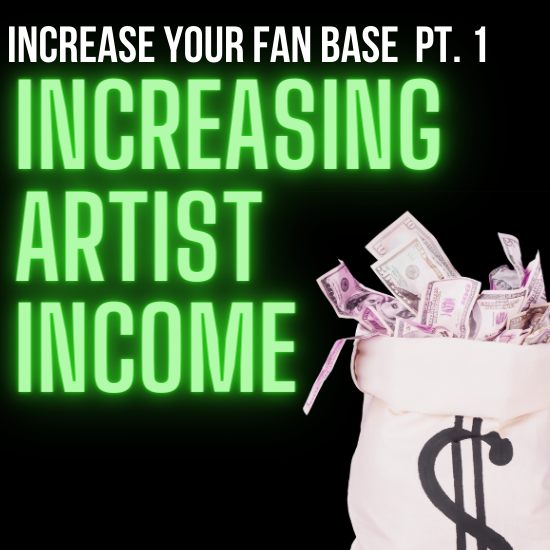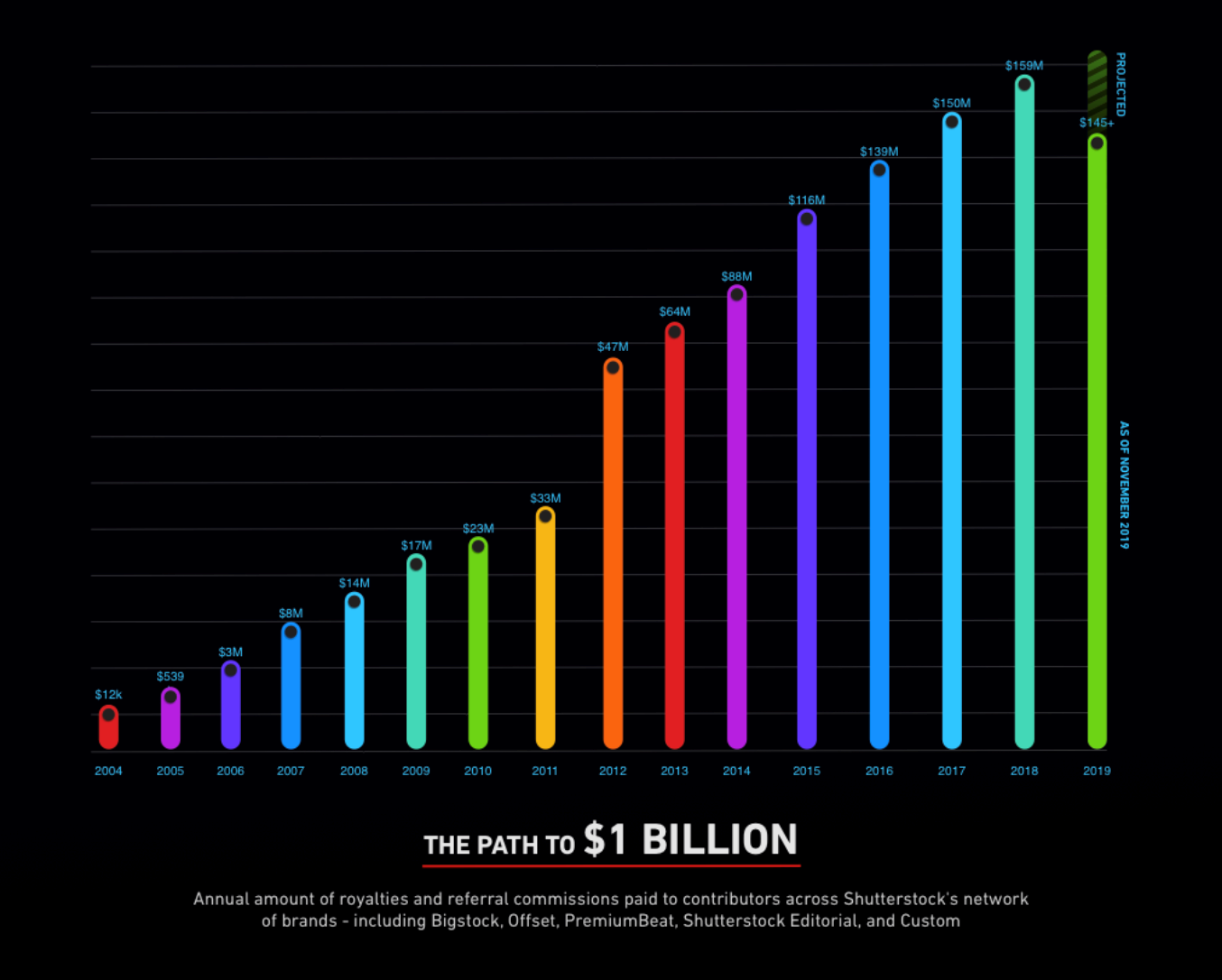Imagine a place where musicians and composers can share their work with the world and earn money at the same time—that’s exactly what Shutterstock Music offers. As part of the larger Shutterstock platform,
Factors Influencing Music Artist Earnings on Shutterstock

When it comes to earning on Shutterstock Music, several key factors come into play. Understanding these can help artists maximize their revenue potential and make strategic choices that boost their income. Here are the main influences:
- Type of License Selected: Shutterstock offers different licensing options—Standard and Enhanced. Each license type has a different price point, which directly affects how much an artist earns. Generally, the more comprehensive the license, the higher the payout.
- Number of Downloads: The more your tracks are downloaded and licensed, the more revenue you generate. Popular tracks that resonate with users tend to have higher download counts, leading to increased earnings.
- Placement and Visibility: How well your music is tagged, categorized, and promoted impacts its discoverability. Tracks that are easy to find and relevant to current trends are more likely to be licensed frequently.
- Exclusive vs. Non-Exclusive Content: Exclusive tracks—those uploaded only to Shutterstock—often fetch higher royalties and may be prioritized in search results. However, non-exclusive tracks can be licensed elsewhere, potentially increasing overall earnings through multiple platforms.
- Quality and Genre of Music: High-quality recordings in popular genres tend to perform better. Keeping your compositions fresh, versatile, and aligned with market demands can boost licensing opportunities.
- Contributor Level and Reputation: As you build your portfolio and reputation on Shutterstock, you might gain access to higher-paying opportunities or promotional features. Consistent quality and participation can elevate your earning potential over time.
Ultimately, your earnings are a combination of these factors, plus your proactive engagement with the platform and understanding of what clients are looking for. By focusing on these elements, you can better navigate Shutterstock Music’s revenue landscape and grow your income as a music artist.
Average Earnings of Shutterstock Music Artists

When it comes to making music on platforms like Shutterstock, a common question is: how much can artists actually earn? The truth is, earnings can vary quite a bit depending on a few key factors. On average, many music contributors report earning anywhere from a few hundred dollars to several thousand dollars per year. But let’s break that down a bit more so you get a clearer picture.
Generally speaking, new or less-established artists might see earnings in the range of $100 to $500 annually. This is totally normal when starting out—building your portfolio and reputation takes time. For more experienced artists who consistently upload high-quality tracks and have a growing library, annual earnings can bump up to $1,000 to $5,000 or more.
It’s also important to recognize that earnings are heavily influenced by:
- Number of tracks uploaded: The more quality tracks you have available, the higher your chances of earning.
- Track popularity: Music that gets more downloads or listens naturally earns more.
- Genre and style: Some genres tend to perform better than others depending on market demand.
Keep in mind, though, that Shutterstock is not a get-rich-quick platform. For many artists, it’s more about growing a passive income stream over time rather than immediate big payouts. Patience, consistency, and continuously improving your craft are key to increasing your earnings.
So, if you’re just starting out, don’t be discouraged by modest initial earnings. With dedication and strategic uploads, your revenue potential can grow significantly over time. Many artists find that their earnings steadily increase as their portfolio expands and their tracks become more popular among buyers and licensees.
How Revenue Is Calculated for Music Contributors
Understanding how your earnings are calculated on Shutterstock can feel a bit like deciphering a mystery, but it’s actually pretty straightforward once you get the hang of it. Essentially, your revenue depends on how often your music is downloaded or licensed, the type of license purchased, and the payout structure in place.
Here’s a simple breakdown of the main factors involved:
| Factor | How It Affects Revenue |
|---|---|
| Type of License | Royalty rates differ between Standard and Enhanced licenses, with Enhanced licenses generally paying more per sale. |
| Download Volume | More downloads mean more earnings. Your payout depends on the number of times your track is licensed. |
| Revenue Share | Shutterstock operates on a revenue-sharing model. You earn a percentage of the net revenue from each sale, which can vary based on your contributor level and other factors. |
| Contributor Level | Higher-tier contributors (based on sales history) can earn higher royalty rates, boosting your overall earnings. |
To put it simply, every time someone licenses your music—be it for a YouTube video, commercial, film, or app—you earn a royalty based on the license type and your contributor status. The more your tracks are downloaded and the more varied the licensing options, the greater your earning potential.
It’s also worth noting that Shutterstock pays contributors on a regular schedule—typically monthly—so you can track your earnings and see how your music is performing over time. Many artists use this data to refine their catalog, focusing on genres and styles that generate higher revenue.
In summary, your earnings are a direct reflection of your music’s popularity and the licensing types it attracts. By understanding these factors and actively managing your portfolio, you can maximize your revenue potential on Shutterstock. Remember, consistent effort and strategic releases are your best tools for turning your passion for music into a sustainable income stream.
Tips for Increasing Your Music Sales on Shutterstock
So, you’re eager to boost your music sales on Shutterstock and get those tracks into the ears of more content creators? Great! While getting noticed might seem challenging at first, there are some tried-and-true strategies that can help you stand out and increase your earnings.
1. Optimize Your Metadata
Think of your music as a product that needs to be easily discoverable. Use clear, descriptive titles, tags, and descriptions. Be specific about the genre, mood, instruments, and any unique features of your tracks. For example, instead of just “Upbeat Music,” try “Upbeat Corporate Motivational Background Music with Piano and Guitar.” The more accurate and detailed your metadata, the higher your chances of appearing in relevant searches.
2. Create Diverse and High-Quality Tracks
Offering a variety of styles and moods broadens your appeal. Whether it’s cinematic scores, upbeat corporate tunes, relaxing ambient tracks, or energetic pop, diversifying your portfolio can attract different types of buyers. Always prioritize quality—use good recording equipment, mix your tracks professionally, and avoid any unwanted noise or errors.
3. Stay Consistent and Active
Uploading new tracks regularly keeps your portfolio fresh and signals activity to Shutterstock’s algorithm. Set a schedule that works for you—whether it’s weekly or monthly—and stick to it. The more high-quality content you add, the more chances you have to be discovered.
4. Engage with the Community and Follow Trends
Join Shutterstock forums or social media groups focused on music licensing. Staying updated on trending genres or popular styles can inspire you to create relevant content. Sometimes, jumping on a trending sound or style can lead to a spike in sales.
5. Promote Your Music Outside Shutterstock
While Shutterstock does a lot of the heavy lifting, don’t hesitate to share your tracks on your personal website, social media, or music forums. Building your personal brand can lead to additional licensing opportunities and direct commissions.
Challenges Faced by Music Artists on the Platform
Of course, working as a music artist on Shutterstock isn’t all sunshine and rainbows. There are several hurdles you might encounter, and being aware of them can help you navigate the platform more effectively.
1. Fierce Competition
With thousands of talented artists uploading tracks daily, standing out can be tough. Your music needs to be not only high quality but also optimized for discoverability. Differentiating yourself through unique styles or niche genres can help, but it requires continuous effort and innovation.
2. Variable and Often Low Royalties
While Shutterstock offers a steady income stream, the per-sale royalties might be modest, especially if your tracks are downloaded frequently but in small quantities. It’s essential to diversify your income sources and consider licensing your music on multiple platforms if possible.
3. Licensing Limitations and Usage Restrictions
Some buyers might have restrictions on how they can use your music, or there may be limitations on the type of projects your tracks are suitable for. Understanding licensing terms thoroughly can help you set realistic expectations and protect your rights.
4. Keeping Up with Trends and Platform Changes
Platforms like Shutterstock often update their algorithms, licensing policies, or submission guidelines. Staying informed requires regular checking of their forums and resources. Falling behind on these updates could impact your visibility and earnings.
5. Time Investment and Patience
Building a successful portfolio takes time. It’s common for new artists to see slow initial sales. Patience, persistence, and continuous improvement are key. Remember, every upload is a step toward establishing your presence and increasing your revenue potential.
In conclusion, while there are challenges to face, understanding them and proactively addressing each one can help you thrive on Shutterstock. Keep creating, stay informed, and don’t get discouraged—your next big sale might just be around the corner!
Conclusion and Final Thoughts on Earning Potential as a Shutterstock Music Artist
Becoming a successful music artist on Shutterstock offers significant earning potential, but it requires dedication, strategic planning, and consistent quality. As a contributor, your revenue depends on various factors such as the number of tracks uploaded, their popularity, licensing frequency, and the types of licenses purchased by clients. It’s important to understand that earnings can fluctuate based on market demand and your ability to produce versatile, high-quality music that appeals to a broad audience.
Key points to maximize your earning potential include:
- Regularly uploading new and diverse tracks to keep your portfolio fresh and relevant.
- Researching trending genres and styles to meet current market demands.
- Optimizing your track titles, descriptions, and tags for better discoverability.
- Engaging with the Shutterstock contributor community for insights and support.
While some artists may see quick returns, others may build their income gradually over time. It’s essential to approach this platform with patience and persistence, continuously refining your craft and marketing strategies. Keep in mind that earning potential can grow exponentially as your catalog expands and your reputation as a reliable contributor solidifies.
In summary, earning as a Shutterstock music artist is achievable with consistent effort and smart strategies. By understanding market trends and optimizing your portfolio, you can unlock a steady stream of income and turn your passion for music into a sustainable revenue source.


